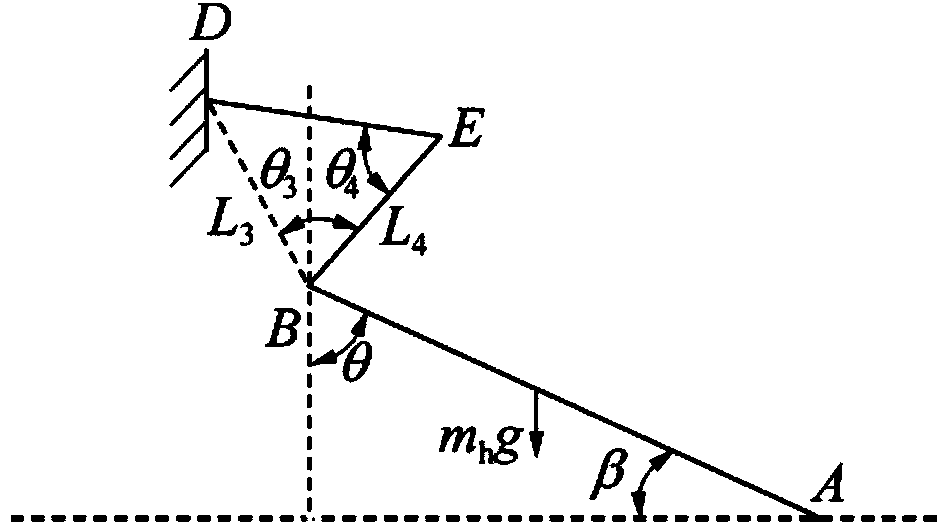Method for calculating longitudinal damping force generated by upward raising of tail hook after cable hooking
A calculation method and technology of damping force, applied in the field of aeronautical engineering, can solve problems such as inability to guarantee the hook cable
- Summary
- Abstract
- Description
- Claims
- Application Information
AI Technical Summary
Problems solved by technology
Method used
Image
Examples
Embodiment Construction
[0030] The parameters of a certain type of fixed-wing aircraft are as follows, see Table 1.
[0031] Table 1 Tail hook and cable parameters
[0032]
[0033] Substitute the data in Table 1 into the above equations ①②③④⑤⑥, and solve each equation within the time t equal to 0 to 3 seconds. When solving translation and rotation, refer to figure 1 , when solving the damping force equation, see figure 2 , image 3 . Use the SIMULINK module in the MATLAB software to solve the problem, see Figure 4 . Choose k=2×10 6 N / m, c=6×10 4 The calculation results at N·s / m are as follows, and the calculation results of the impact between the tail hook and the road surface are shown in Figure 5 . The maximum damping force of the longitudinal buffer is 285550N during the upward rotation of the tail hook, which shows that the longitudinal buffer has a certain tendency to inhibit the upward rotation of the hook.
PUM
 Login to View More
Login to View More Abstract
Description
Claims
Application Information
 Login to View More
Login to View More - R&D
- Intellectual Property
- Life Sciences
- Materials
- Tech Scout
- Unparalleled Data Quality
- Higher Quality Content
- 60% Fewer Hallucinations
Browse by: Latest US Patents, China's latest patents, Technical Efficacy Thesaurus, Application Domain, Technology Topic, Popular Technical Reports.
© 2025 PatSnap. All rights reserved.Legal|Privacy policy|Modern Slavery Act Transparency Statement|Sitemap|About US| Contact US: help@patsnap.com



